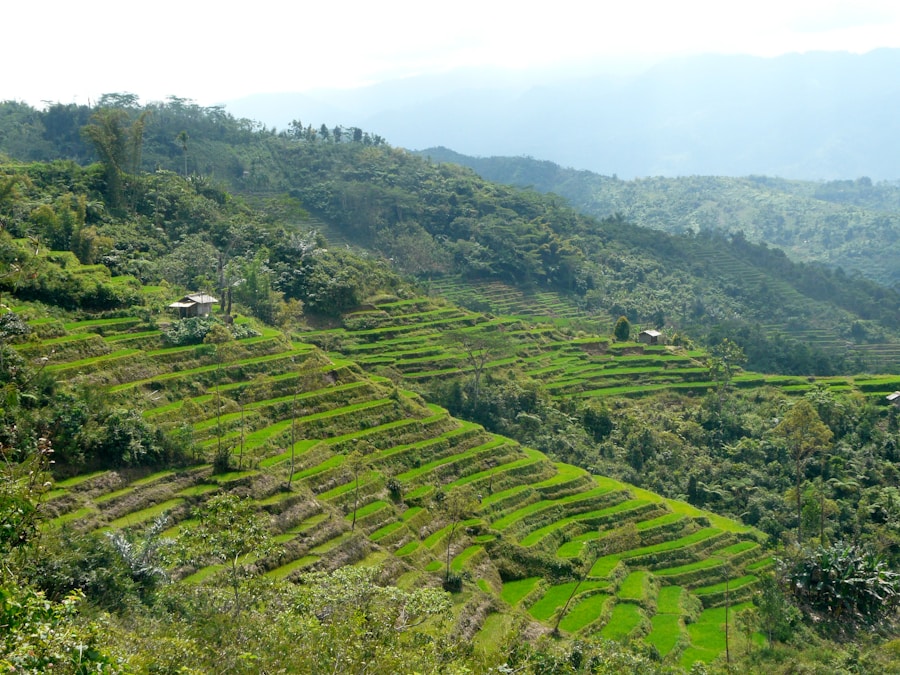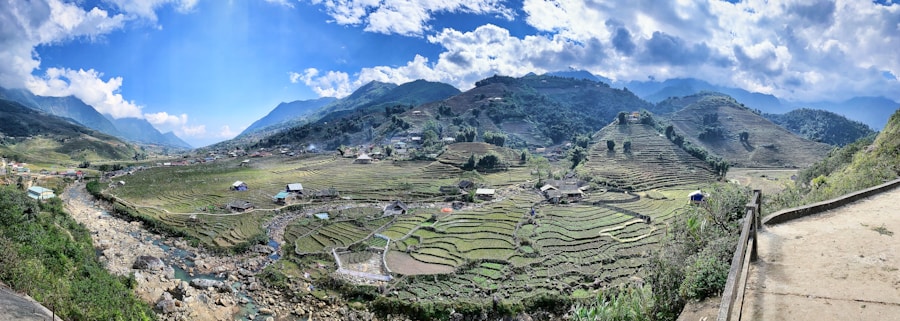Download links
How to install Banaue Rice Terraces: A Marvel of Ancient Engineering APK?
1. Tap the downloaded Banaue Rice Terraces: A Marvel of Ancient Engineering APK file.
2. Touch install.
3. Follow the steps on the screen.
Description
The Banaue Rice Terraces, often referred to as the “Eighth Wonder of the World,” boast a rich history that dates back over 2,000 years. These terraces were carved into the mountains of Ifugao province in the Philippines by the indigenous Ifugao people, who developed sophisticated agricultural techniques to cultivate rice in a challenging mountainous environment. The construction of these terraces is believed to have begun around 2000 B.C., although some estimates suggest that the rice cultivation practices may have started even earlier.
The terraces are not merely agricultural fields; they represent a deep connection between the Ifugao people and their land, showcasing their ingenuity and resilience. The historical significance of the Banaue Rice Terraces extends beyond their agricultural function. They are a testament to the Ifugao’s cultural identity and their traditional practices.
The Ifugao people utilized a system of irrigation that harnessed rainwater and natural springs, allowing them to cultivate rice in an otherwise inhospitable terrain. This intricate relationship with nature has been preserved through oral traditions, rituals, and festivals that celebrate the harvest and honor the spirits believed to inhabit the land.
Key Takeaways
- The Banaue Rice Terraces were built over 2,000 years ago by the Ifugao people, making them a UNESCO World Heritage site and a testament to ancient engineering and agricultural practices.
- The terraces were ingeniously engineered to utilize natural water sources and prevent soil erosion, showcasing the Ifugao people’s deep understanding of their environment and sustainable farming techniques.
- The terraces hold immense cultural significance for the Ifugao people, serving as a symbol of their identity, heritage, and connection to the land, and are often referred to as the “Eighth Wonder of the World.”
- While the terraces have had a positive impact on the environment by preserving biodiversity and preventing soil erosion, they also face environmental challenges such as deforestation and climate change.
- The preservation of the Banaue Rice Terraces is threatened by modernization, urbanization, and the migration of younger generations away from traditional farming practices, posing a risk to their long-term sustainability.
- The future of the Banaue Rice Terraces depends on efforts to balance preservation with the needs of the local community, sustainable tourism, and the implementation of modern conservation and agricultural practices.
The Ingenious Engineering behind the Banaue Rice Terraces
The engineering marvel of the Banaue Rice Terraces lies in their design and construction, which exemplifies the Ifugao people’s remarkable understanding of hydrology and agriculture. The terraces are built on steep slopes, with each level meticulously crafted to create flat surfaces for rice cultivation. This design not only maximizes arable land but also minimizes soil erosion, a critical consideration in such a fragile ecosystem.
The terraces are interconnected by a network of irrigation channels that distribute water from higher elevations to lower fields, ensuring that each level receives adequate moisture for rice growth. The construction techniques employed by the Ifugao are equally impressive. The terraces were built using locally sourced materials, primarily stone and mud, which were carefully stacked without the use of mortar.
This dry-stone construction method has proven to be remarkably durable, allowing the terraces to withstand the test of time and natural disasters such as earthquakes and typhoons. The engineering principles behind these terraces reflect a deep understanding of gravity, water flow, and soil conservation, showcasing an advanced level of agricultural engineering that predates modern practices.
The Cultural Significance of the Banaue Rice Terraces

The Banaue Rice Terraces are not just an agricultural feat; they are deeply woven into the cultural fabric of the Ifugao people.
The Ifugao view rice as more than just a staple food; it is a symbol of life and prosperity.
The cultivation and harvesting of rice are accompanied by various rituals and ceremonies that honor ancestral spirits and seek blessings for bountiful harvests. These practices reinforce social bonds within the community and ensure the transmission of cultural knowledge from one generation to the next. Moreover, the terraces serve as a living museum of Ifugao culture.
They are often featured in local festivals, such as the Imbayah Festival, which celebrates the rich heritage of the Ifugao people through music, dance, and traditional rituals. The terraces also attract tourists from around the world, providing an opportunity for cultural exchange and awareness. However, this influx of visitors brings both opportunities and challenges, as it necessitates a delicate balance between preserving cultural integrity and accommodating modern tourism demands.
The Environmental Impact of the Banaue Rice Terraces
| Aspect | Metric |
|---|---|
| Deforestation | Approximately 85% of the original forest cover has been lost due to terrace construction and agricultural activities. |
| Biodiversity | The terraces support a rich diversity of plant and animal species, including endemic and endangered species. |
| Soil Erosion | The construction of the terraces has led to significant soil erosion, impacting the fertility of the land. |
| Water Management | The terraces are an impressive example of ancient water management systems, conserving and distributing water for agriculture. |
| Climate Change | The terraces play a role in mitigating climate change by sequestering carbon and reducing soil erosion. |
The environmental impact of the Banaue Rice Terraces is multifaceted, reflecting both positive contributions to biodiversity and challenges posed by modern pressures. On one hand, the terraces have created a unique agro-ecosystem that supports a variety of plant and animal species. The intricate irrigation systems foster diverse aquatic life in the channels while providing habitats for birds and other wildlife.
Additionally, the terraced landscape helps prevent soil erosion and promotes water conservation, making it an exemplary model of sustainable agriculture. However, the environmental sustainability of the Banaue Rice Terraces is increasingly threatened by climate change and human activities. Changes in rainfall patterns have led to unpredictable growing seasons, affecting rice yields and threatening food security for local communities.
Furthermore, deforestation for logging or agricultural expansion has resulted in habitat loss and increased soil erosion, undermining the very ecological balance that the terraces were designed to maintain. As such, addressing these environmental challenges is crucial for ensuring the long-term viability of this UNESCO World Heritage site.
The Challenges Facing the Preservation of the Banaue Rice Terraces
Despite their historical and cultural significance, the Banaue Rice Terraces face numerous challenges that jeopardize their preservation. One major issue is the decline in traditional farming practices among younger generations. As urbanization increases and economic opportunities shift towards cities, many young Ifugao are leaving their ancestral lands in search of better livelihoods.
This migration has led to a decrease in labor available for terrace maintenance and rice cultivation, resulting in overgrown fields and deteriorating infrastructure. Additionally, external pressures such as tourism can be a double-edged sword. While tourism provides essential income for local communities, it can also lead to environmental degradation if not managed sustainably.
Increased foot traffic can erode terrace walls and disrupt irrigation systems, while commercial development can encroach on traditional lands. Balancing economic development with cultural preservation is a complex challenge that requires collaboration among local communities, government agencies, and conservation organizations.
The Future of the Banaue Rice Terraces

Empowering Local Communities
Community engagement is crucial; empowering local farmers through education and resources can help revitalize traditional agricultural practices while fostering pride in their cultural heritage. Initiatives that promote organic farming methods or agro-tourism can provide alternative income sources while ensuring that traditional knowledge is passed down through generations.
Leveraging Technology for Preservation
Moreover, leveraging technology can play a significant role in monitoring and preserving these terraces. Geographic Information Systems (GIS) can be utilized to map changes in land use or monitor soil health over time, providing valuable data for conservation efforts. Collaborative projects involving local communities, researchers, and government bodies can facilitate innovative solutions to address environmental challenges while promoting sustainable tourism practices.
A Brighter Future Ahead
In conclusion, while the Banaue Rice Terraces face significant challenges, there is hope for their future through concerted efforts aimed at preservation and sustainable development. By valuing both their cultural significance and ecological importance, stakeholders can work together to ensure that this remarkable heritage continues to thrive for generations to come.
If you are interested in learning more about the Banaue Rice Terraces, you may also want to check out this article on Lorem Ipsum. Lorem Ipsum is a popular placeholder text often used in design and publishing. This article may provide additional context or background information related to the Banaue Rice Terraces.
FAQs
What are the Banaue Rice Terraces?
The Banaue Rice Terraces are ancient terraces carved into the mountains of Ifugao in the Philippines. They are often referred to as the “Eighth Wonder of the World” and are a UNESCO World Heritage Site.
How were the Banaue Rice Terraces created?
The terraces were hand-carved over 2,000 years ago by the ancestors of the indigenous Ifugao people. They were built using minimal equipment and primarily through manual labor.
What is the significance of the Banaue Rice Terraces?
The terraces are not only a stunning example of ancient engineering and agricultural practices, but they also hold cultural and spiritual significance for the Ifugao people. They are a symbol of their connection to the land and their ancestors.
How big are the Banaue Rice Terraces?
The terraces cover approximately 10,360 square kilometers of mountainside and are estimated to stretch for about 20,000 kilometers if laid end to end.
Can visitors explore the Banaue Rice Terraces?
Yes, visitors are welcome to explore the terraces and there are hiking trails that allow for up-close views of the stunning landscape. However, it is important to respect the land and the local customs while visiting.





